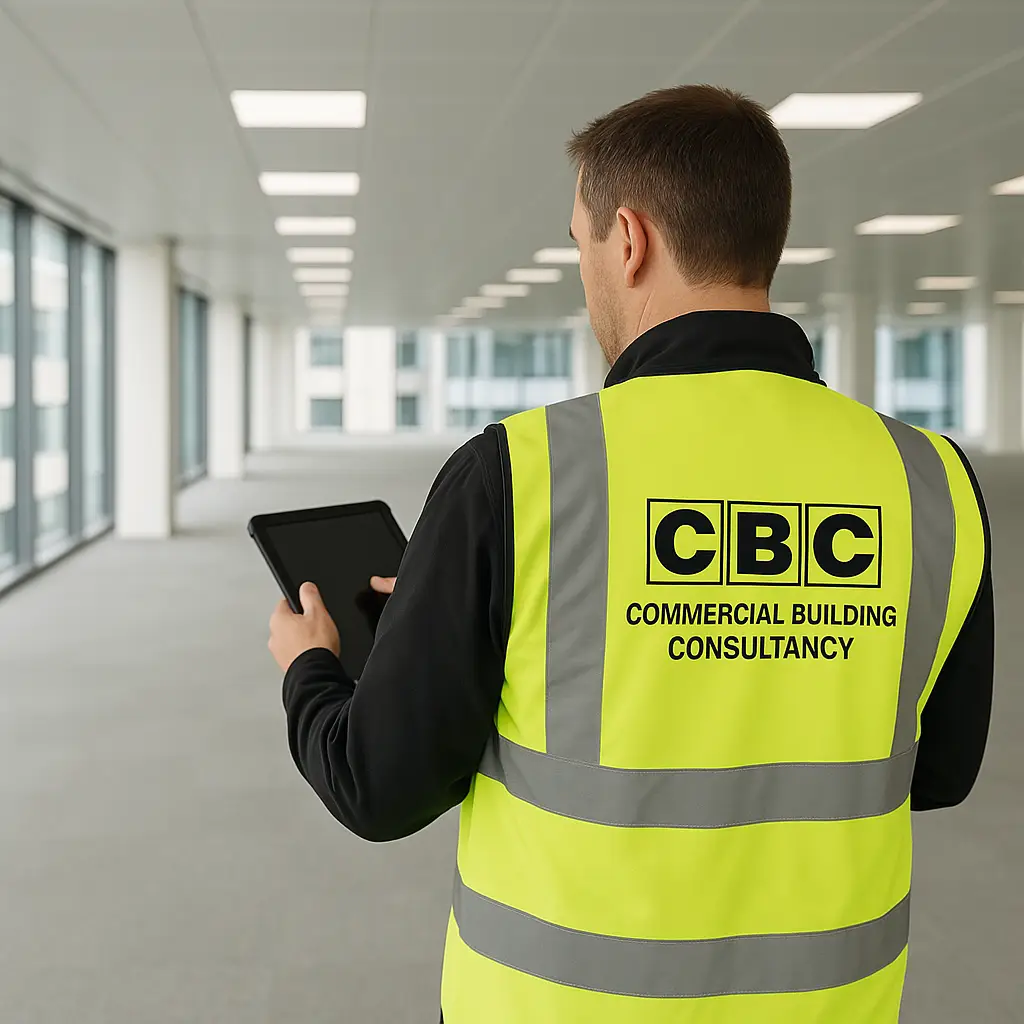Entering into a commercial lease agreement can be a complex process for both landlords and tenants. One of the most critical steps in this process is conducting a Schedule of Condition (SoC) survey. This comprehensive examination of a property’s condition at a specific point in time is essential for establishing a clear record of the property’s state, thereby preventing future disputes and unexpected costs. This guide provides a step-by-step approach to conducting an SoC survey for commercial properties.
Step 1: Understand the Purpose of an SoC Survey
Why it matters: An SoC survey documents the exact condition of a property before a lease begins. This survey is crucial for:
- Protecting Both Parties: It helps both landlords and tenants by clearly defining the property’s condition, preventing disputes over damages and repairs.
- Setting Maintenance Standards: It outlines the state of the property, which can serve as a reference for maintenance and repairs throughout the lease term.
Benefit: A well-conducted SoC survey ensures transparency, fosters trust, and protects the interests of both landlords and tenants.
Step 2: Choose a Qualified Surveyor
Why it matters: The accuracy and reliability of an SoC survey depend on the expertise of the surveyor conducting it.
How to choose:
- Look for Qualifications: Select a surveyor who is a member of a recognised professional body, such as the Royal Institution of Chartered Surveyors (RICS).
- Check Experience: Ensure the surveyor has extensive experience in conducting SoC surveys for commercial properties.
- Request References: Ask for references or case studies to verify the surveyor’s expertise and reliability.
Benefit: Hiring a qualified surveyor ensures a thorough and accurate assessment of the property’s condition.
Step 3: Schedule the Survey
Why it matters: Timing is crucial to ensure that the survey accurately reflects the property’s condition at the appropriate stage of the leasing process.
When to schedule:
- Before Lease Commencement: Conduct the survey before the lease starts to establish a clear baseline condition.
- Before Major Renovations: If renovations or alterations are planned, schedule a survey to document the pre-work condition.
- Lease Renewal or Extension: Schedule another survey when renewing or extending a lease to update the record of the property’s condition.
Benefit: Proper timing of the survey ensures that it accurately reflects the property’s condition at key stages.
Step 4: Conduct the Property Inspection
Why it matters: A thorough inspection is the foundation of a reliable SoC survey.
What to inspect:
- Structural Elements: Check walls, floors, ceilings, roofs, and foundations for any signs of damage, cracks, or dampness.
- Exterior Features: Inspect external walls, roofing, windows, doors, and external fixtures like gutters and downspouts.
- Interior Finishes: Examine internal walls, flooring, ceilings, and built-in fittings.
- Services and Installations: Assess plumbing, electrical systems, heating, and cooling installations.
- Fixtures and Fittings: Inspect any permanent fixtures and fittings, such as kitchen units or bathroom fittings.
Benefit: A comprehensive inspection ensures that all aspects of the property are documented, providing a complete picture of its condition.
Step 5: Document the Findings
Why it matters: Detailed documentation is essential for creating a reliable reference for the property’s condition.
How to document:
- Written Descriptions: Provide detailed descriptions of the condition of each inspected element, noting any existing damage or wear.
- Photographs and Videos: Use high-quality photographs and videos to visually document the property’s condition. Ensure that these visual records are clear and comprehensive.
- Annotated Plans: Include annotated floor plans highlighting areas of concern or interest.
Benefit: Thorough documentation provides clear and indisputable evidence of the property’s condition.
Step 6: Compile the SoC Report
Why it matters: The SoC report is the formal record of the property’s condition, serving as the official reference throughout the lease term.
What to include:
- Introduction and Scope: Outline the purpose of the survey and the scope of the inspection.
- Detailed Descriptions: Provide detailed written descriptions of all inspected elements, supported by visual documentation.
- Summary of Findings: Summarise the key findings, highlighting any significant issues or areas of concern.
- Recommendations: Include any recommendations for immediate repairs or maintenance actions.
Benefit: A well-compiled report ensures that all relevant information is clearly presented and easily accessible.
Step 7: Review and Agree on the Report
Why it matters: Both parties must agree on the findings of the SoC report to ensure its validity and usefulness.
How to review:
- Joint Review: The landlord and tenant should review the report together, discussing any discrepancies or concerns.
- Clarify and Amend: Address any issues raised during the review, making amendments if necessary to reflect a mutually agreed understanding of the property’s condition.
- Formal Agreement: Once both parties are satisfied, formally agree on the report. This agreement can be documented by signing the report or adding a clause in the lease agreement.
Benefit: Mutual agreement on the report fosters trust and ensures that both parties are aligned on the property’s condition.
Step 8: Use the SoC Report During the Lease Term
Why it matters: The SoC report is a valuable reference throughout the lease term, helping to manage maintenance responsibilities and resolve disputes.
How to use:
- Maintenance Planning: Use the report to plan and budget for regular maintenance and repairs, ensuring the property remains in good condition.
- Dispute Resolution: Refer to the report to resolve any disputes over damages or repair responsibilities, providing clear evidence of the property’s condition at the start of the lease.
- End-of-Lease Inspection: Use the report as a benchmark during the end-of-lease inspection to assess any changes in the property’s condition and determine repair obligations.
Benefit: Regular use of the SoC report helps to maintain the property and prevent disputes, ensuring a smooth and cooperative leasing relationship.
Conclusion Conducting a Schedule of Condition survey before leasing a commercial property is a crucial step in ensuring a transparent and fair leasing process. By following this step-by-step guide, both landlords and tenants can benefit from a clear understanding of the property’s condition, preventing disputes and managing maintenance responsibilities effectively. From choosing a qualified surveyor to using the SoC report during the lease term, each step is essential for protecting the interests of both parties and fostering a positive leasing experience.


